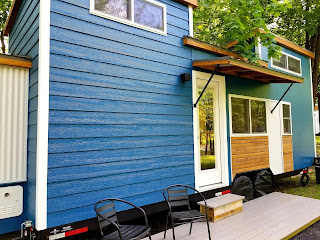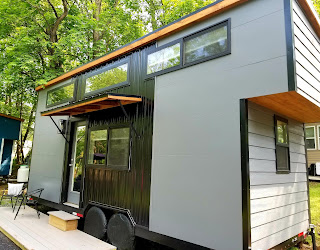These days it seems like Fall and Winter just run into each
other. We haven’t had much of the cooler
temperatures to enjoy as much as it seems we should or used to. Fall almost seems like a half of a season
anymore. We are experiencing temps
dipping into the teens already here in south central PA, so we have begun our
winterizing process ahead of time.
Winterizing probably looks much different to many people
depending on your location, I assume some are looking at arctic freezes for our
friends in the far north, who need much more to beat the freeze, and maybe it's just a sweatshirt to keep
warm to the lucky ones living in the far south.
But here among the valleys, rolling hills and small mountains surrounding us, we will experience issues like frozen pipes if we don’t address it correctly and timely.
Again, what you have to do will depend on where you live, but there are a few things we can do to prepare. Some have recommended that you seal up around your doors and windows fully with caulk. This can be okay, however if you are burning propane heat in your home, you may want to have some of those little areas not sealed so tightly so you are getting some releases of any potential harmful buildup in your tiny house. We recommend a carbon monoxide detector in all homes like this just to be on the safe side. Propane heat blankets are options for propane tanks for those experiencing a more drastic drop in air temps, they can be expensive, a few hundred dollars, however, it could end up saving you more than that later down the road.
Heated hoses opposed to RV hoses are another option you can choose, as RV hoses will freeze much easier. Do you have p-traps that are insulated, are they
located inside or on the outside of your tiny home? Make sure you know where these are located. We supplement the heat in some of our homes
with small electric space heaters, suited for up to 400 sq ft and are quite convenient and so far efficient. The ones we use are small and the whole unit fits right into the outlet, so it actually doesn't take up any floor space. We have mini splits in most
homes, and some of the other units have electric wall heaters depending on the builder. So, this is a learning process for us as well
with different style houses and this being our first winter open, we are
learning that each house is unique and requires different maintenance.
Adding skirting will help keep out wind,use pipe insulation or foam wrap, and heat tape is a must on pipes under homes in our area. We always need to make sure the indoor main
heating unit is running as well.
Some thoughts for building, if you think you will be in an
area that experiences cold winter seasons, extra insulation in the floor and
ceiling is something you might want to invest in when you’re doing your build. Heat rises, so a lot of heat can be lost
through the ceiling if it’s not insulated well enough. We have some homes here with radiant floor
heating which is a wonderful option. Who doesn’t want to walk around on a warm
hardwood floor in the winter? It’s also
great for pets, so think about them too as they get older and it gets colder,
they will appreciate the heat on their bodies too.
What tips and tricks do you have for surviving tiny during the
winter? We would love to hear your thoughts, and feedback. Leave us a comment!




Comments
Post a Comment